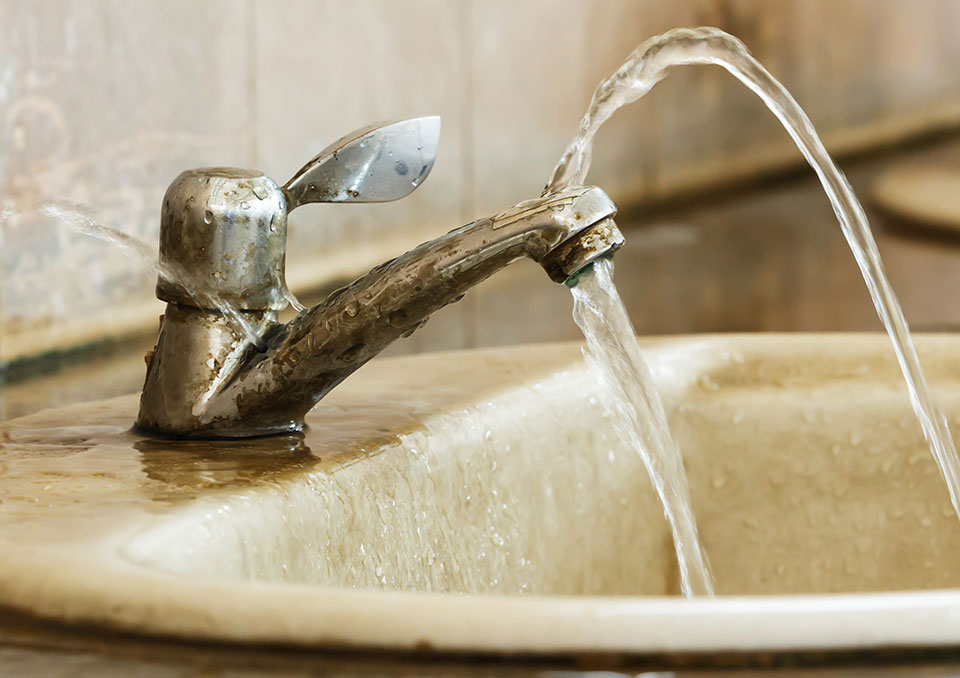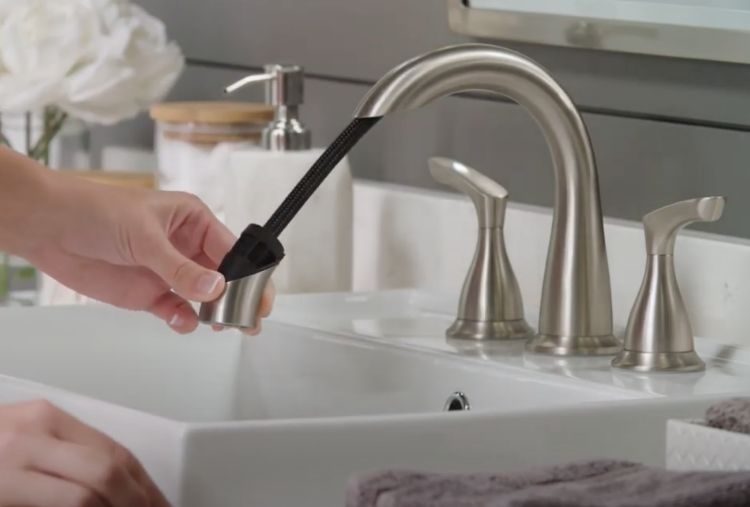Uncovering the Value of Repairing a Dripping Faucet
Uncovering the Value of Repairing a Dripping Faucet
Blog Article
We've unearthed this article pertaining to Why It's Important to Fix Leaky Faucets below on the web and decided it made perfect sense to share it with you in this article.

Leaking taps might appear like a small aggravation, yet their influence surpasses simply the annoyance of the noise. From wasting water to incurring unnecessary financial costs and health risks, ignoring a dripping tap can bring about numerous repercussions. In this post, we'll delve into why it's important to address this common house problem quickly and efficiently.
Wastage of Water
Ecological Effect
Dripping taps contribute significantly to water waste. According to the Environmental Protection Agency (EPA), a solitary faucet trickling at one drip per second can waste greater than 3,000 gallons of water per year. This not just strains water resources yet likewise influences environments and wild animals based on them.
Step-by-Step Overview to Fixing a Dripping Tap
Tools Required
Before trying to take care of a dripping faucet, gather the needed devices, consisting of an adjustable wrench, screwdrivers, substitute components (such as washing machines or cartridges), and plumber's tape.
Typical Tap Issues and Their Solutions
Identify the kind of tap and the specific issue triggering the drip. Usual troubles include damaged washers, corroded valve seats, or malfunctioning O-rings. Describe supplier instructions or online tutorials for step-by-step assistance on repair services.
Financial Expenses
Boosted Water Expenses
Beyond the environmental impact, dripping taps can blow up water costs significantly. The collected waste in time translates right into greater utility expenses, which can have been stayed clear of with prompt repair services.
Prospective Home Damage
In addition, extended dripping can bring about damage to fixtures and surfaces bordering the faucet. Water accumulation can trigger staining, deterioration, and even architectural issues if left ignored, resulting in extra repair expenses.
Wellness Concerns
Mold and Mold Development
The constant visibility of moisture from a leaking tap develops a perfect atmosphere for mold and mildew and mold development. These fungis not just compromise indoor air quality however likewise present health risks, particularly for individuals with respiratory conditions or allergies.
Waterborne Diseases
Stagnant water in dripping taps can come to be a breeding place for microorganisms and various other microorganisms, enhancing the risk of waterborne diseases. Impurities such as Legionella microorganisms prosper in stagnant water, potentially bring about severe health problems when ingested or breathed in.
Do it yourself vs. Professional Fixing
Pros and Cons of Do It Yourself Repair Work
While some might attempt to deal with a trickling faucet themselves, DIY fixings include their very own set of obstacles. Without appropriate expertise and tools, do it yourself attempts can worsen the issue or cause insufficient repair work, extending the trouble.
Benefits of Employing a Specialist Plumber
Hiring an expert plumber makes sure that the underlying source of the dripping faucet is attended to properly. Plumbers possess the know-how and tools to detect and fix tap concerns efficiently, saving time and reducing the risk of further damage.
Environmental Responsibility
Specific Payment to Preservation
Taking duty for taking care of leaking faucets aligns with more comprehensive initiatives towards water preservation and environmental sustainability. Every individual's activities jointly make a significant impact on maintaining valuable resources.
Lasting Living Practices
By prioritizing punctual fixings and embracing water-saving habits, people contribute to lasting living practices that benefit both existing and future generations.
Preventive Measures
Normal Maintenance Tips
To avoid dripping faucets, execute routine upkeep such as cleaning aerators, checking for leaks, and replacing damaged components quickly. In addition, think about mounting water-saving devices or upgrading to a lot more reliable fixtures.
Significance of Prompt Fixes
Addressing dripping faucets as quickly as they're observed protects against further water wastage and potential damage, eventually saving both water and money in the future.
Influence On Property Value
Perception of Well-Maintained Residential Or Commercial Property
Maintaining a residential property in good condition, consisting of attending to maintenance issues like trickling taps, improves its perceived worth and worth amongst prospective buyers or tenants.
Impact on Resale Value
Properties with properly maintained plumbing fixtures, including taps, command higher resale worths in the real estate market. Resolving leaking taps can contribute to a favorable perception throughout home evaluations and arrangements.
Conclusion
Resolving a trickling tap surpasses simple comfort; it's a necessary step toward preserving water, decreasing economic prices, and protecting health and wellness and residential or commercial property. Whether with do it yourself fixings or professional support, acting to take care of leaking taps is a tiny yet impactful means to advertise liable stewardship of sources and add to a healthier, more sustainable future.
Most Common Reasons for a Leaky Faucet and How to Stop the Drip
Whether it’s your kitchen faucet leaking or a bathroom faucet leaking, one leaky faucet can waste anywhere from three to 30 gallons of water every single day. If the constant drip-drip-drip doesn’t get your attention, your water bill will. The good news is that, by following a few simple steps, chances are pretty good you can fix the problem yourself.
Why is it dripping?
Before you start taking things apart, let’s break down some of the most common causes of a leaky faucet.
Bad O-ring.
A cartridge is a valve that controls the flow of water into the faucet spout. On cartridge faucets there’s an O-ring—the little disc attached to the stem screw that holds the faucet handle in place. If it’s loose or worn-out, it can cause your sink handle to leak. Of course, the cartridge itself could be worn out. If that’s the case, make sure you replace it with the exact same kind.
Corroded valve seat.
The valve seat connects the faucet and the spout. If the leak seems to be coming from the spout, it might be because a buildup of water sediment has corroded the valve seat.
Worn-out washers or seals.
A leaky spout could be caused by a bad washer that rests against the valve seat. It’s just a matter of time before friction takes its toll. It could also be the wrong size washer or one that’s been installed incorrectly. Water sediments can also corrode inlet and outlet seals.
Water pressure.
If the faucet only drips now and then, or when you turn the handles a certain way, you should probably check your home’s water pressure.
Loose or broken parts.
The adjusting ring and packing nuts in the stream screw can become loose over time, causing your sink handle to leak. Try tightening or replacing the packing nut. If the leak is coming from the pipes underneath the sink, you probably have a broken pipe or fitting. If that’s the case, you should definitely call a plumber.
Know your faucet.
Faucets come in a variety of types. Each one has its own assembly—and its own possible causes of leaks. Learning about the four most common kinds of faucets will help you know how to take them apart and make any repairs.
How to stop a leaky faucet
Fixing that leaky faucet doesn’t have to take a lot of time, money, or expertise. It’s usually a simple matter of replacing a worn-out washer or gasket, a loose O ring, or another part. Chances are really good you can do this yourself if you follow these simple steps.
Shut off the water.
Before you tackle the faucet, cut off the water supply to the sink. There should be one valve for hot and one for cold. Hand-turn them clockwise with your hands till they close. If there are no valves under the sink, head to the basement and shut off the main water supply to the house. Then turn on the faucet until it empties out the water that’s still in the line and you’re ready to start. It’s a good idea to cover the sink drain with a plug or a rag so you don’t lose any small pieces and parts while you’re working.

As a passionate reader on How to Fix a Dripping or Leaky Faucet , I think sharing that post was worthwhile. In case you enjoyed reading our blog entry plz do not forget to pass it around. Thanks a bunch for your time. Return soon.
Report this page